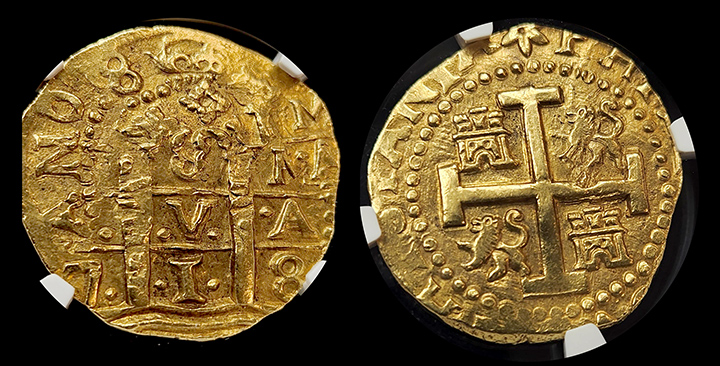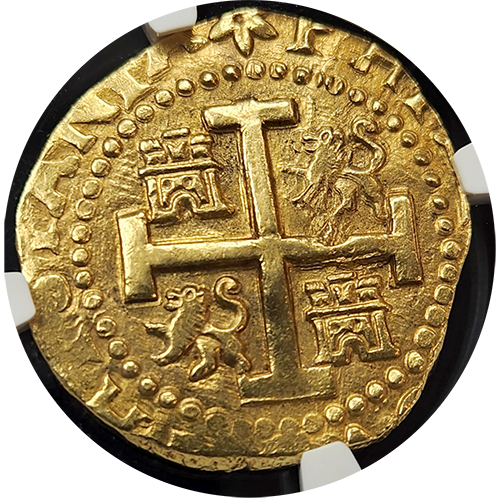
The historic 1715 Fleet Shipwreck holds legendary status among maritime disasters. This catastrophe occurred on the eastern coast of Florida on July 31, 1715, when Spanish ships laden with treasure met their end.
The Fleet's Departure
The Spanish fleet set sail from Havana, Cuba, aiming to return to Spain. Altogether, the ships carried a vast fortune of gold, silver, and precious gems. In fact, the treasure's estimated worth was millions of pesos, and the ships formed a crucial part of Spain's colonial wealth.
The Storm That Changed History
A violent hurricane struck the fleet off the coast of Florida without warning. The ships struggled against fierce winds and waves, but the fleet lay shattered by dawn. Eleven of the twelve ships sank, their treasures scattered across the seabed. The hurricane's force left a trail of destruction and death.
Some survivors managed to reach the shore, and Spanish authorities soon launched recovery efforts. They faced numerous challenges. Above all, the fierce conditions made salvage operations difficult. Furthermore, pirates and privateers posed constant threats. Despite these obstacles, Spain recovered a fraction of the treasure. However, the majority remained lost to the sea.
The lost treasure's value is immense. Accordingly, historians and treasure hunters estimate it to be in the billions. Gold coins, silver bars, and precious jewelry lay buried underwater, with each artifact telling a story of Spain's colonial wealth. The 1715 Fleet Shipwreck remains one of history's most significant treasure troves.
Rediscovery of the Fleet
Centuries passed without the treasure being discovered underwater, but in 1964, a treasure hunter named Kip Wagner reignited interest. Meanwhile, he formed the Real Eight Company, and his team embarked on an extensive search. They used early underwater detection technology, and their efforts paid off—they found several wreck sites along Florida's coast.
Modern technology revolutionized salvage operations. Likewise, advanced sonar and metal detectors aided treasure hunters. Teams recovered countless artifacts from the wrecks, including coins, jewelry, and everyday items that emerged from the depths. Each discovery added to the historical narrative of the 1715 Fleet.
Legal Battles Over Treasure
The rediscovery sparked legal disputes, with various parties claiming rights to the treasure. Spain, private companies, and the state of Florida fought bitterly in court, adding complexity to salvage operations. Ultimately, agreements were made, and the treasure's division balanced historical and commercial interests.
Significance of the Artifacts
Artifacts from the 1715 Fleet Shipwreck hold immense historical value. Specifically, they provide insight into colonial-era Spain. Coins bear the markings of Spanish mints, while jewelry showcased intricate craftsmanship. Everyday items reveal details of life aboard the fleet. Subsequently, these artifacts bridge the past and present.
Museums around the world exhibit artifacts from the 1715 Fleet to educate the public about maritime history. They highlight the significance of the shipwrecks and the preservation efforts to ensure the artifacts remain intact. This way, the story of the 1715 Fleet continues to captivate audiences and future generations.
The Ongoing Search
Treasure hunters still search for the remaining treasure as advances in technology fuel their efforts. Equally important, each new discovery adds a chapter to the story. The 1715 Fleet Shipwreck symbolizes the enduring allure of lost treasure—the quest for discovery remains as strong as ever.
The Human Element
The shipwreck's story extends beyond the treasure and encompasses the lives of those on board. Sailors, officers, and passengers faced the hurricane's wrath. Equally important, their survival and struggles form a crucial part of the narrative, adding depth to the shipwreck's history.
The 1715 Fleet Shipwreck teaches valuable lessons and highlights the dangers of maritime travel. The disaster underscores the unpredictable nature of the sea and emphasizes the importance of perseverance. Besides, the relentless search for the treasure embodies human tenacity.
 The Future of Exploration
The Future of Exploration
Today, advancements in technology will uncover more of the fleet's secrets. Undoubtedly, future exploration holds promise as researchers and historians continue to study the artifacts. Their work will deepen our understanding of the historic 1715 Fleet Shipwreck, and the shipwreck's legacy will endure.
Conclusion
The Historic 1715 Fleet Shipwreck remains a captivating chapter in maritime history. Its story of loss and rediscovery fascinates treasure hunters and historians alike. The artifacts recovered provide a glimpse into Spain's colonial past. Legal battles over the treasure reflect its immense value. Preservation efforts ensure that future generations can appreciate this history. The ongoing search for remaining treasures and the study of recovered artifacts ensure that the story of the 1715 Fleet remains a vital part of our cultural heritage.
Here at Austin Rare Coins & Bullion, we have recently acquired some beautiful 8 Escudos from the fleet shipwreck. If anyone is interested in having them, call our office and speak to any Austin Rare Coins Advisor.
